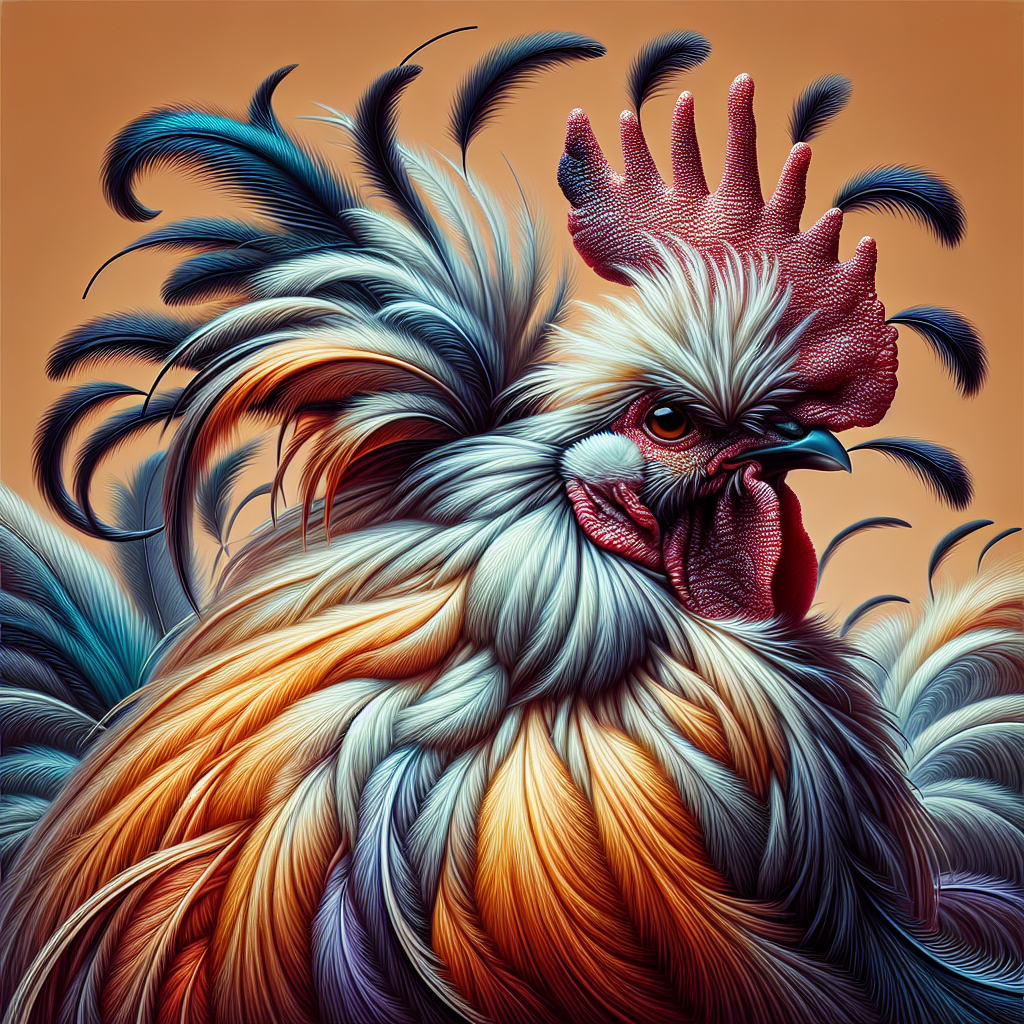Have you ever wondered how bantam breeds stack up against their standard-sized counterparts? It’s an intriguing question that many poultry enthusiasts ponder. In this article, we’ll explore the key differences and similarities between bantam breeds and standard-sized breeds, giving you a deeper understanding of these unique varieties. From their size and temperament to their egg production and maintenance requirements, we’ll cover it all. So, grab a cup of tea, settle in, and let’s discover the fascinating world of bantam and standard-sized chicken breeds together.
Size
Bantam Breeds: Smaller in Size
Bantam breeds are known for being significantly smaller in size compared to standard-sized breeds. These pint-sized chickens are not only adorable but also more compact, which makes them a perfect choice for those with limited space. Bantam chickens generally reach about one-third to one-half the size of standard-sized breeds, making them an ideal option for small backyards or urban settings.
Standard-Sized Breeds: Larger in Size
On the other hand, standard-sized breeds are much larger in size compared to their bantam counterparts. These majestic chickens can grow to be a full-sized bird, providing an impressive presence in any backyard or farm setting. With their robust and grand appearance, standard-sized breeds offer a sense of majesty and awe that is unmatched by bantams.
Weight
Bantam Breeds: Lighter Weight
As expected, bantam breeds are lighter in weight compared to standard-sized breeds. The smaller size of these chickens contributes to their lower weight. Bantam chickens typically weigh around one-third to one-half of what standard-sized chickens weigh. This lighter weight makes them easier to handle, especially for younger chicken enthusiasts or those who prefer a more manageable bird.
Standard-Sized Breeds: Heavier Weight
Standard-sized breeds, by nature, have a much heavier weight compared to bantam breeds. Due to their larger size, these chickens weigh significantly more. The weight of standard-sized chicken breeds can vary widely depending on the specific breed. Some may reach weights of 5 to 10 pounds, while others can grow up to 12 to 15 pounds. Their substantial weight adds to their majestic appearance and makes them better suited for meat production purposes.
Appearance
Bantam Breeds: Compact and Adorable
If you’re looking for chickens with an undeniable charm, bantam breeds are the way to go. These chickens exhibit a compact and adorable appearance that melts hearts. With their smaller size, bantams tend to have a well-proportioned body, with plump feathers and a round shape. Their compactness enhances their cuteness and makes them ideal for those who appreciate the charm of miniature animals.
Standard-Sized Breeds: Robust and Majestic
Standard-sized breeds, on the other hand, embody a sense of grandeur and magnificence. These chickens have a robust and majestic appearance, with a larger body size and more pronounced features. Their striking presence adds a regal touch to chicken coops or farm settings. Whether they flaunt elaborate plumage or display a dignified stance, standard-sized breeds captivate with their picturesque beauty.
Egg Production
Bantam Breeds: Smaller Eggs with Potential Broody Tendencies
While bantam breeds may lay eggs, they generally produce smaller-sized eggs compared to standard-sized breeds. These eggs may be petite but are no less delicious or nutritious. Additionally, bantam breeds tend to have a higher likelihood of displaying broody tendencies. This means they have a natural inclination to sit on their eggs and hatch them. For those interested in raising baby chicks, having a broody bantam can be a joyous experience.
Standard-Sized Breeds: Larger Eggs with Consistent Production
Standard-sized breeds are known for their ability to lay larger eggs consistently. These eggs are usually larger in size and provide an excellent source of protein and nutrients. If you’re looking to have a steady supply of sizable eggs, standard-sized breeds are a reliable choice. Their larger bodies and reproductive capabilities make them well-suited for consistent egg production.
Feeding and Space Requirements
Bantam Breeds: Lower Feed Consumption and Space Needs
One advantage of bantam breeds is that they have lower feed consumption compared to their larger counterparts. Due to their smaller size, bantams require less food to maintain their body weight and overall health. This can be a cost-saving feature for backyard enthusiasts who prefer to keep a smaller flock. Additionally, bantams have lower space requirements, making them suitable for small urban spaces or backyard coops with limited room.
Standard-Sized Breeds: Higher Feed Consumption and Space Needs
Standard-sized breeds, being larger in size, naturally have higher feed consumption requirements. Their larger bodies and higher metabolic rates mean they need more food to sustain themselves. This can entail higher feeding costs and larger food storage requirements. Moreover, standard-sized breeds need more space to comfortably accommodate their size. If you have ample space and can provide the necessary feed, these breeds will thrive in a larger setting.
Temperament
Bantam Breeds: Often More Active and Skittish
When it comes to temperament, bantam breeds tend to be more active and skittish in comparison to their standard-sized counterparts. Bantams are known for their energy and agility, making them lively and always on the move. This can make handling bantams slightly more challenging, particularly for those who prefer a calmer chicken. However, their active nature can be appealing to individuals seeking interaction and amusement from their feathered friends.
Standard-Sized Breeds: Generally Calmer and Less Flighty
In contrast, standard-sized breeds are known for their calmer and less flighty temperament. These chickens tend to be more laid-back and content spending time in the coop or scratching around the yard. The calm demeanor of standard-sized breeds makes them easier to handle, especially for individuals who value a relaxed and tranquil atmosphere. Their mellow nature can be particularly appealing for families or individuals who want a pet-like chicken.
Behavior within Flocks
Bantam Breeds: Can Be Bullied by Standard-Sized Breeds
When it comes to integrating different chicken breeds within a flock, it’s important to consider their behavior. Bantam breeds are often more vulnerable to bullying when mixed with standard-sized breeds. Due to their smaller size, bantams can become targets for dominance-related aggression or pecking order disputes. It’s essential to monitor interactions carefully when introducing bantams to a mixed flock or provide separate spaces to prevent any harm.
Standard-Sized Breeds: Tend to Dominate Bantam Breeds
Standard-sized breeds, being larger and often more dominant, tend to establish themselves as the leaders in a mixed flock that includes bantams. Their size and assertiveness may result in them taking charge and determining the pecking order within the group. This behavior is natural within the social dynamics of chickens; however, it’s important to ensure the safety and well-being of bantam breeds when integrating them with standard-sized breeds.
Noise Levels
Bantam Breeds: Usually Quieter
If you have concerns about noise levels in your chicken-keeping venture, bantam breeds are generally a quieter option. These chickens tend to have a more subdued vocalization, producing softer and less frequent sounds. While they may still cluck, crow, or occasionally make noise, their overall volume tends to be lower. This can be advantageous for those living in urban areas or neighborhoods with noise restrictions.
Standard-Sized Breeds: Can Be Louder
Standard-sized breeds, although not excessively noisy, can have a bolder and livelier vocalization compared to bantam breeds. Their larger bodies and stronger air sacs contribute to a potentially louder crow or cluck. While not a concern for individuals in more rural or spacious settings, those living in closer proximity to neighbors may need to consider this aspect when choosing a chicken breed.
Suitability for Backyards
Bantam Breeds: Better for Small Urban Spaces
Bantam breeds are highly suitable for small backyard spaces, making them an ideal choice for urban chicken keeping. Their smaller size, lower feed consumption, and quieter nature allow them to thrive and provide companionship in limited spaces. Whether you have a small backyard or a balcony coop, these pint-sized chickens can bring joy and entertainment without compromising the comfort of your neighbors.
Standard-Sized Breeds: Require More Space
For those with larger backyards or ample land, standard-sized breeds can be a great fit. These majestic birds require more space to roam, scratch, and exhibit their natural behaviors. Standard-sized breeds flourish in environments where they have room to spread their wings, explore and forage. If you have the resources and space available, standard-sized breeds can create a picturesque farm-like atmosphere and provide an authentic chicken-keeping experience.
Usage and Purpose
Bantam Breeds: Pets, Exhibition, and Ornamental Purposes
Bantam breeds are particularly popular for their suitability as pets, exhibition birds, and ornamental purposes. Their compact size, charming appearance, and unique plumage variations make them a favorite among chicken enthusiasts. Whether you want a delightful pet to interact with, a breed to showcase in poultry shows, or a beautiful addition to your garden or backyard, bantam breeds will captivate with their adorable presence.
Standard-Sized Breeds: Pets, Meat, Egg Production, and Work Purposes
Standard-sized breeds are incredibly versatile and can serve multiple purposes. Along with being delightful pets, they are often bred for meat production, as they provide a substantial amount of poultry meat. Standard-sized breeds are also reliable egg layers, supplying households with a steady stream of eggs. Additionally, certain work-oriented breeds are trained for specific tasks, such as foraging or pest control, utilizing their natural instincts for practical purposes.
In conclusion, both bantam breeds and standard-sized breeds have unique characteristics and qualities to offer. The choice between them ultimately depends on individual preferences, space availability, and intended purposes. Whether you opt for the compact and adorable nature of bantam breeds or the majestic presence of their standard-sized counterparts, keeping chickens can be a rewarding experience that brings joy, companionship, and fresh eggs to your life.




